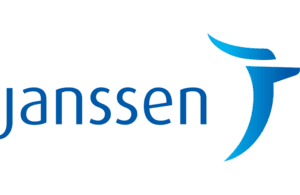 Johnson & Johnson (NYSE:JNJ) has opened an almost 200,000 ft2 science and technology campus in the San Francisco Bay Area. The new facility more than doubles the presence of the company in the Bay Area, which has been a hub for life sciences innovation for decades. Up to 400 employees will work at the facility.
Johnson & Johnson (NYSE:JNJ) has opened an almost 200,000 ft2 science and technology campus in the San Francisco Bay Area. The new facility more than doubles the presence of the company in the Bay Area, which has been a hub for life sciences innovation for decades. Up to 400 employees will work at the facility.
“This campus is our downpayment in our ability to innovate for the future,” said Johnson & Johnson CEO Joaquin Duato at an opening ceremony for the facility in Brisbane, California.
The new science and technology campus will unite scientific and technological capabilities by housing Janssen Research and Development (R&D), Johnson & Johnson Innovation and Johnson & Johnson Technology under one roof.
The new site was designed to spur internal and external collaboration, said James Merson, global therapeutic area head for infectious diseases and site lead.
“The San Francisco Bay Area is unique in the respect that we have Silicon Valley,” Merson said. The region is “well-recognized as a hub for science and technology, data science entrepreneurship and innovation,” he added.
The focus on data science has become increasingly vital for Janssen. The company has made significant investments in machine learning and AI in recent years. As a result, data scientists have been “completely integrated into how we discover and develop our medicines,” Merson added. “They’re enabling us to go much faster than we did previously.”
Merson expects that the new science and technology campus will help the company continue to recruit “world-class data scientists.”
The site’s R&D focus includes gene and RNA therapies and emerging therapies for retinal and infectious diseases. “This was a fit-for-purpose building,” Merson said. “We were able to take the opportunity to upgrade the equipment. And we have the appropriate biocontainment facilities.”
Janssen expects that uniting R&D, innovation and technology activities in a single campus could accelerate drug discovery and development. “I think That colocation will allow us to do R&D In a way where we can discover, develop and deliver transformative medicines to improve healthcare worldwide,” Merson said. “We think we can do this more efficiently, faster by being colocated.”
Data scientists and scientists sit on the same floor on the new campus. “When people can articulate a problem to solve, they solve it more effectively when they’re colocated,” Merson said.
Giving data scientists access to research scientists can help them “learn faster about the scientific challenges facing us for various diseases,” Merson said.
The new Janssen facility, for instance, is working to develop a functional cure for Hepatitis B. “We work with our data science colleagues to ensure that we can properly characterize patients using bioinformatics,” Merson said. “That then allows us to run our clinical studies more efficiently. Because clinical trials are frequently a relatively slow process in drug discovery and development, “anything we can do to expedite and make our clinical trials more efficient is a good thing,” he added.
While Janssen, like many other companies, has increased its reliance on video conferencing software such as Zoom during the pandemic, in-person collaboration remains formidable in sparking creativity “You definitely see a tick up in the ability of teams to solve a problem when they’re physically working together,” Merson said.